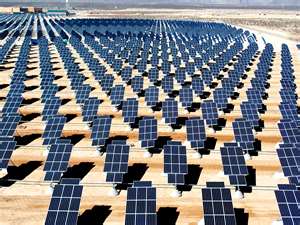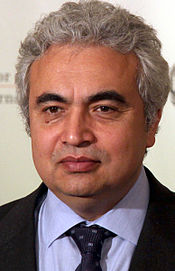 “Will we look into the eyes of our children and confess that we had the opportunity, but lacked the courage? That we had the technology, but lacked the vision?” These words preface the report Energy [R]evolution 2012: A Sustainable World Energy Outlook published this month by Greenpeace, the European Renewable Energy Council and the Global Wind Energy Council. It’s the fourth edition in a series which began in 2007. The publication is book length and over its pages describes a renewable energy scenario which sees CO2 emissions fall 85% from 1990 levels by 2050. I thought it well worth drawing attention to.
“Will we look into the eyes of our children and confess that we had the opportunity, but lacked the courage? That we had the technology, but lacked the vision?” These words preface the report Energy [R]evolution 2012: A Sustainable World Energy Outlook published this month by Greenpeace, the European Renewable Energy Council and the Global Wind Energy Council. It’s the fourth edition in a series which began in 2007. The publication is book length and over its pages describes a renewable energy scenario which sees CO2 emissions fall 85% from 1990 levels by 2050. I thought it well worth drawing attention to.
The authors can hardly be accused of utopian dreams. The technology exists to access stores of renewable energy far larger than the world’s energy requirements. The publication describes in careful and comprehensive detail an achievable programme of transition which would leave no need for the world’s fossil fuel resources to be pursued to the point of exhaustion or anywhere near it. Carbon capture and storage is not part of the scenario, for reasons of cost and uncertainty; nor is nuclear energy, which, for reasons of cost, safety and inability to reduce emissions by a large enough amount, is marked for phase-out.
The reduction of demand through energy efficiency, the “sleeping giant” which offers the most cost-effective way to reform the energy sector, is a vital element in the transition. Over and over again surveys and analyses are making this clear, and the report is very much in line with an increasingly common theme in the literature. High levels of projected energy demand diminish dramatically when energy efficiency is given high priority. The document shows the effect of best practice in various sectors of the economy.

 The Guardian, with the exception of the
The Guardian, with the exception of the  Pursuing the last drop of oil should not be on the agenda of any country which takes climate change seriously. That’s why I applaud the Greenpeace and Te Whanau a Apanui action in endeavouring – successfully for a time – to stop the Petrobas seismic testing vessel off the East Cape. Potential danger to the marine environment is one of the reasons for the protest, and in the thinking of Greenpeace climate change is the other. The action is part of their longer term campaign against new oil and coal development in favour of a clear orientation to the clean technology which would show New Zealand was serious about moving to a low-carbon world.
Pursuing the last drop of oil should not be on the agenda of any country which takes climate change seriously. That’s why I applaud the Greenpeace and Te Whanau a Apanui action in endeavouring – successfully for a time – to stop the Petrobas seismic testing vessel off the East Cape. Potential danger to the marine environment is one of the reasons for the protest, and in the thinking of Greenpeace climate change is the other. The action is part of their longer term campaign against new oil and coal development in favour of a clear orientation to the clean technology which would show New Zealand was serious about moving to a low-carbon world.